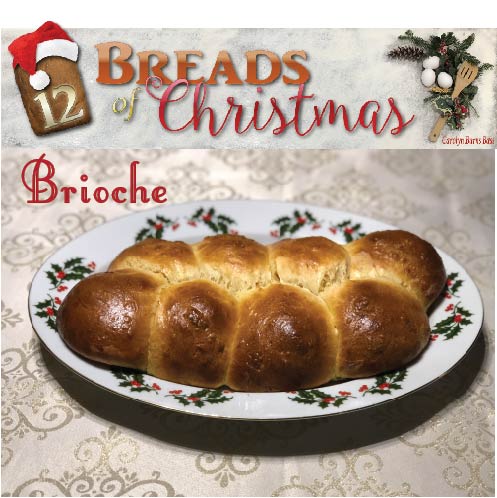When French peasants were starving from a lack of bread Marie Antoinette was rumored to say, “Let them eat cake.” The traditional French translation for cake is brioche, the velvety soft, sweet bread of France. (This phrase cast the young princess as callous and uncaring, fueling the bloody revolution that would come. Historians believe the phrase to have been fake news, propaganda created to cast the princess as insensitive to the desperate plight of her people, for no evidence exists to prove the princess ever said it.)
Brioche is my comfort bread. It’s almost as sweet as cake, but tender and buttery inside the crisp, golden crust. In France brioche is eaten for breakfast as commonly as croissants, no butter required. Why? The butter is baked inside the brioche. Like most breads there are numerous variations of brioche recipes. Independent bakers try out dozens of variations of brioche before settling on a recipe. This is the recipe I’ve adapted for my own.
Brioche dough is silky and pliant, lending well to creative dough preparations. It’s easily braided like challah, it makes lovely dinner rolls, and the rollas can be arranged into wreaths, Christmas trees, and other designs. I’ve made a simple loaf of rolls with this presentation.

Ingredients
SPONGE:
3 eggs
2 c white bread flour
1/4 c warm milk
2 tbl dry active yeast (not quick acting)
DOUGH:
1/2 c (4 oz, or 1 commercial stick) butter, softened
1/3 c sugar
1 tsp salt
1 tsp vanilla
EXTRAS:
1/4 c water
1 egg
Instructions
- Preheat oven to 375°F about 15 minutes before placing bread into oven.
- Warm milk in microwave or on stovetop, being careful not to overheat. Optimum temperature is between 105-110°F for yeast to activate. (If you’re using a bread machine, you can skip this step, as the bread machine will heat the dough to activate yeast.)
- MAKE THE SPONGE
- Whisk together the eggs and warm milk until smooth.
- In large mixing bowl or bread machine pan, add warm milk and egg mixture to flour and yeast. (Alternate method is to dissolve the yeast in the milk until frothy, before adding the eggs.) After mixing completely into a slack dough, allow to rest for a minimum of one hour before moving on to the dough step.
- DOUGH
- Add remaining ingredients to the sponge mixture in the order listed, either in a bread machine, stand mixer, or a large baking bowl. Knead dough for about 15 minutes (or complete dough cycle in bread machine). Dough will be smooth, glossy and elastic.
- Let dough rest in a lightly greased bowl, covered loosely with a cloth, for about 60 minutes, or until the dough roughly doubles in size.
- You do not need to flour your work surface. Remove dough to countertop and deflate. Divide dough into equal lumps, as many as you choose. Roll the lumps into balls with your hands and arrange them in your design on a sheet of parchment paper.
- Allow to rise for another 60 to 90 minutes. Dough will double in size.
- A few minutes before you’re ready to bake the brioche, whisk together the water and egg thoroughly.
- Brush top of dough with egg wash prior to placing in the oven. This steps gives the crust its glossy crunch. You can top brioche with extras, like powdered sugar, sugar crystals, orange zest, etc. Adventurous bakers also add chocolate chips, finely chopped nuts, candied fruit and other festive extras.
- Bake for 20 to 25 minutes, or until bread has an temperature of 205°F and the rolls are glossy and golden.


 Save Recipe
Save Recipe